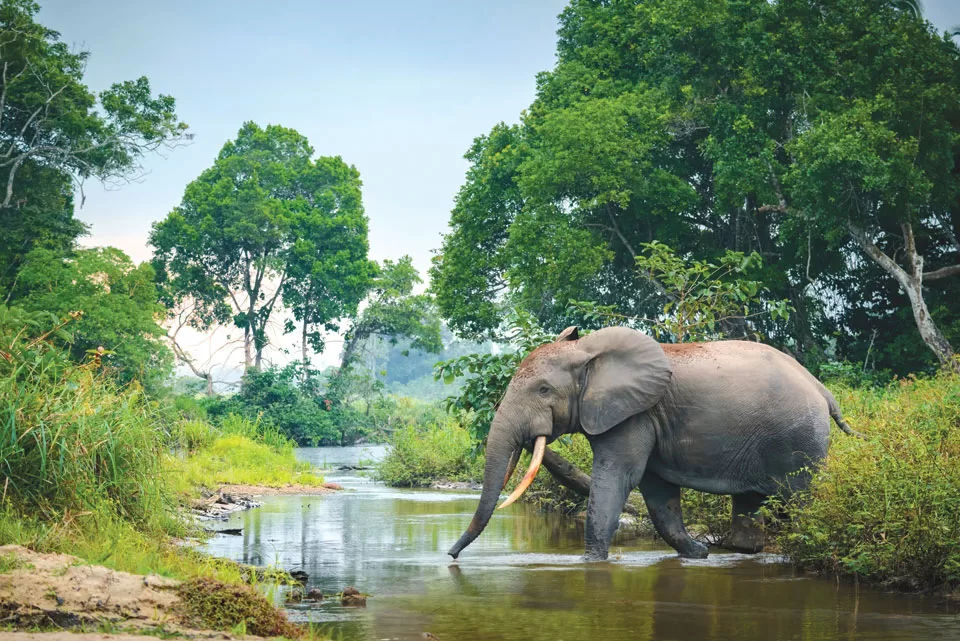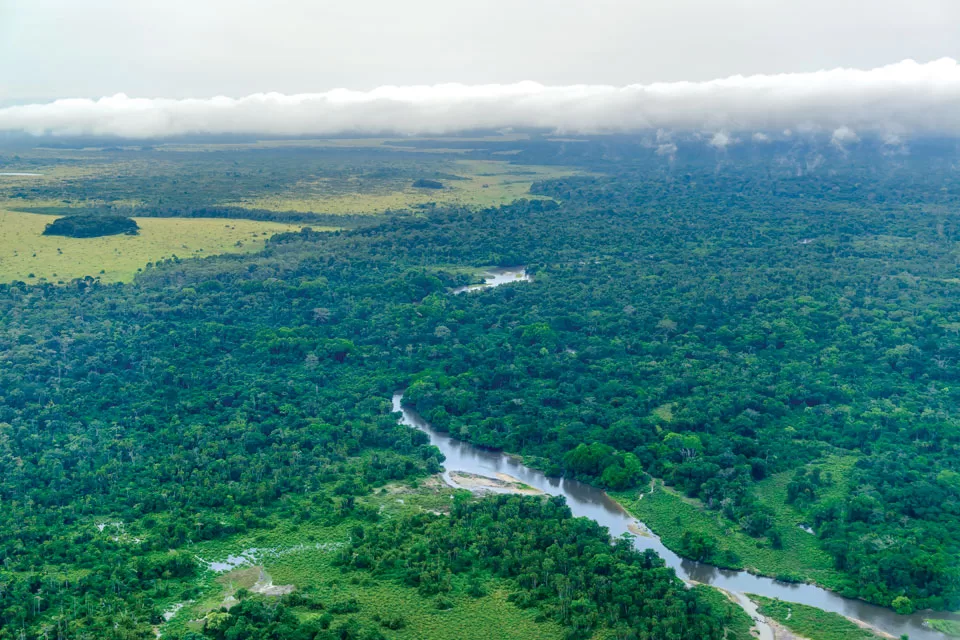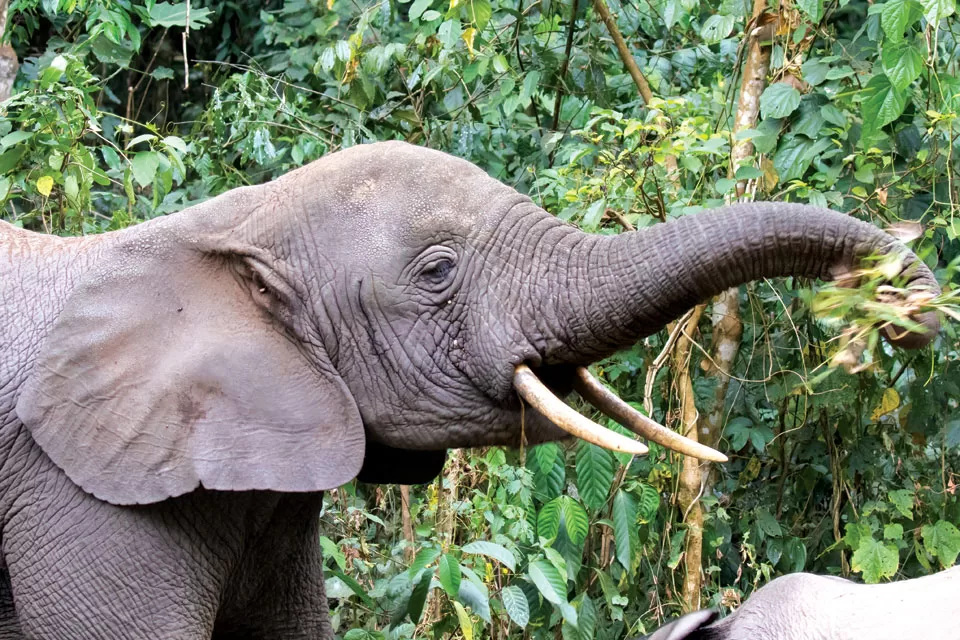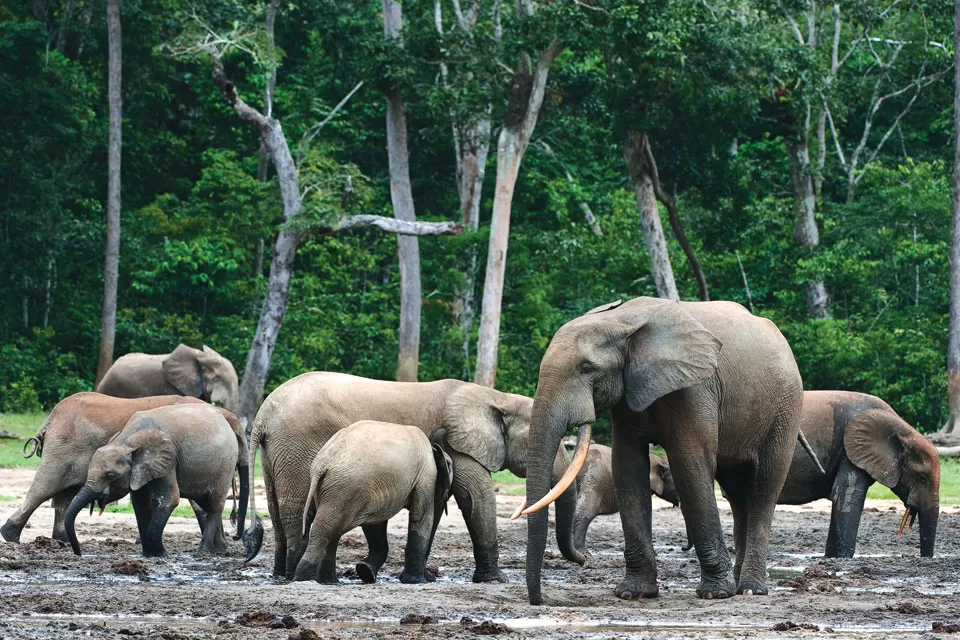
African forest elephants are the elusive cousin of the African savanna elephant. They inhabit the dense rainforests of west and central Africa. Their habitat of dense forest habitat prohibits traditional counting methods such as visual identification. Their population is usually estimated through “dung counts” which is based on the ground anaylsis of the density and distribution of the feces.
African forest elephants are smaller in size than African savanna elephants, the other African elephant species. They are between eight to ten feet tall and generally weigh 2.5 tons. Their ears are more oval-shaped and their tusks are straighter and point downward. There are also differences in the size and shape of the skull and skeleton.
African forest elephants live in family groups of up to 20 individuals and forage on leaves, grasses, seeds, fruit, and tree bark. Since the diet of forest elephants is dominated by fruit, they play a crucial role in dispersing many tree species, particularly the seeds of large trees which tend to have high carbon content. They are therefore referred to as the ‘mega-gardener of the forest.’ To supplement their diet with minerals, they gather at mineral-rich waterholes.
Females reach sexual maturity between the age of 8 and 12 years, depending on the population density and nutrition available. On average, they begin breeding at the age of 23 and give birth every 5–6 years. As a result, the birth rate is lower than the bush species.
Baby elephants weigh around 232 pounds at birth. Almost immediately, they can stand up and move around. The baby suckles using its mouth while its trunk is held over its head. Their tusks do not come until around 16 months and calves are not weaned until they are roughly 4 or 5 years old.



Forest elephants have a lifespan of about 60 to 70 years and mature slowly, coming to puberty in their early teens.
The African elephant species are threatened foremost by habitass and habitat fragmentation due to conversion of forests for agriculture, livestock farming, and human infrastructure. As a result, human-elephant conflict has increased.
Poaching for ivory is the most immediate threat for African forest elephants. Their populations declined by 62% between 2002 and 2011 and, during that period, the species also lost 30% of its geographical range.
Forest elephants are primarily threatened by poaching for bushmeat and ivory. Despite a global CITES ban on international sales of elephant ivory since 1990, thousands of African elephants are killed annually to meet illicit demand for ivory products like carvings and jewelry. Consumer demand has created the main market for illegal ivory globally over the past few decades. While poaching in Africa has declined since the peak of 2012, there remains a devasting level of poaching of elephant ivory for the markets that persist in Africa, and globally.
As habitats contract and human populations expand, people and elephants are increasingly coming into contact with each other. Where farms border elephant habitat or cross elephant migration corridors, damage to crops and villages can become commonplace. This often leads to conflicts that elephants invariably lose. But loss of life can occur on both sides, as people may be trampled while trying to protect their livelihoods, and game guards often shoot “problem” elephants.
If the current unsustainable rate of exploitation of forest elephants continues, this iconic species could become extinct within our lifetime. Forest elephants are referred to as ‘ecosystem engineers’ due to their role in physically transforming the forest as they move through it and feed. They create light gaps by knocking down trees, keep the undergrowth clear by trampling vegetation, and speed decomposition by shattering rotting logs. They disperse seeds and fertilize the soil with their dung, compact it with their feet, and cultivate it with their tusks. All these activities contribute to the ecological functioning of the forest and are essential for the maintenance of a healthy ecosystem. The absence of elephants would bring about severe shifts in the stability of central Africa’s rainforests, affecting countless other species sharing this habitat.

